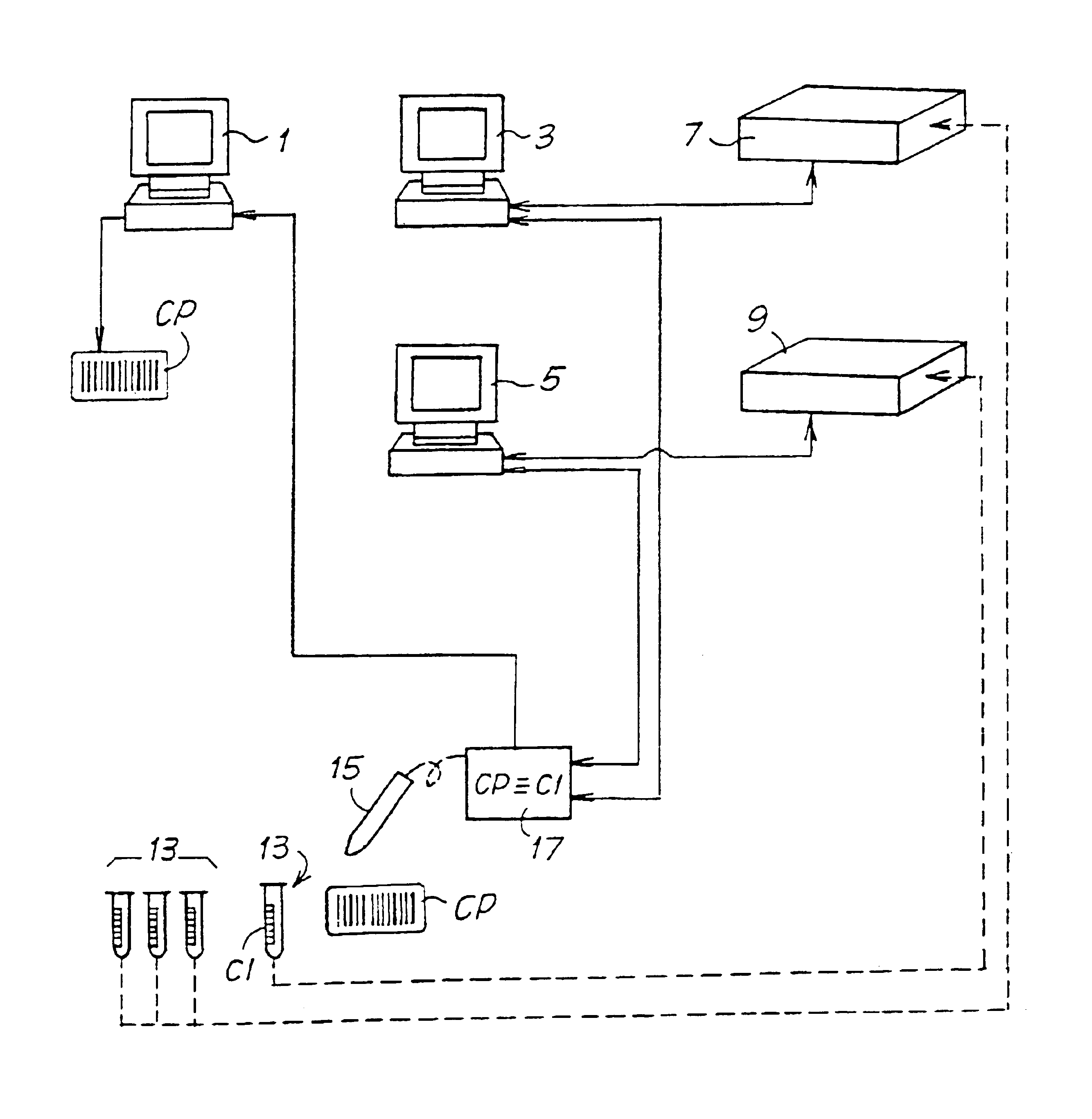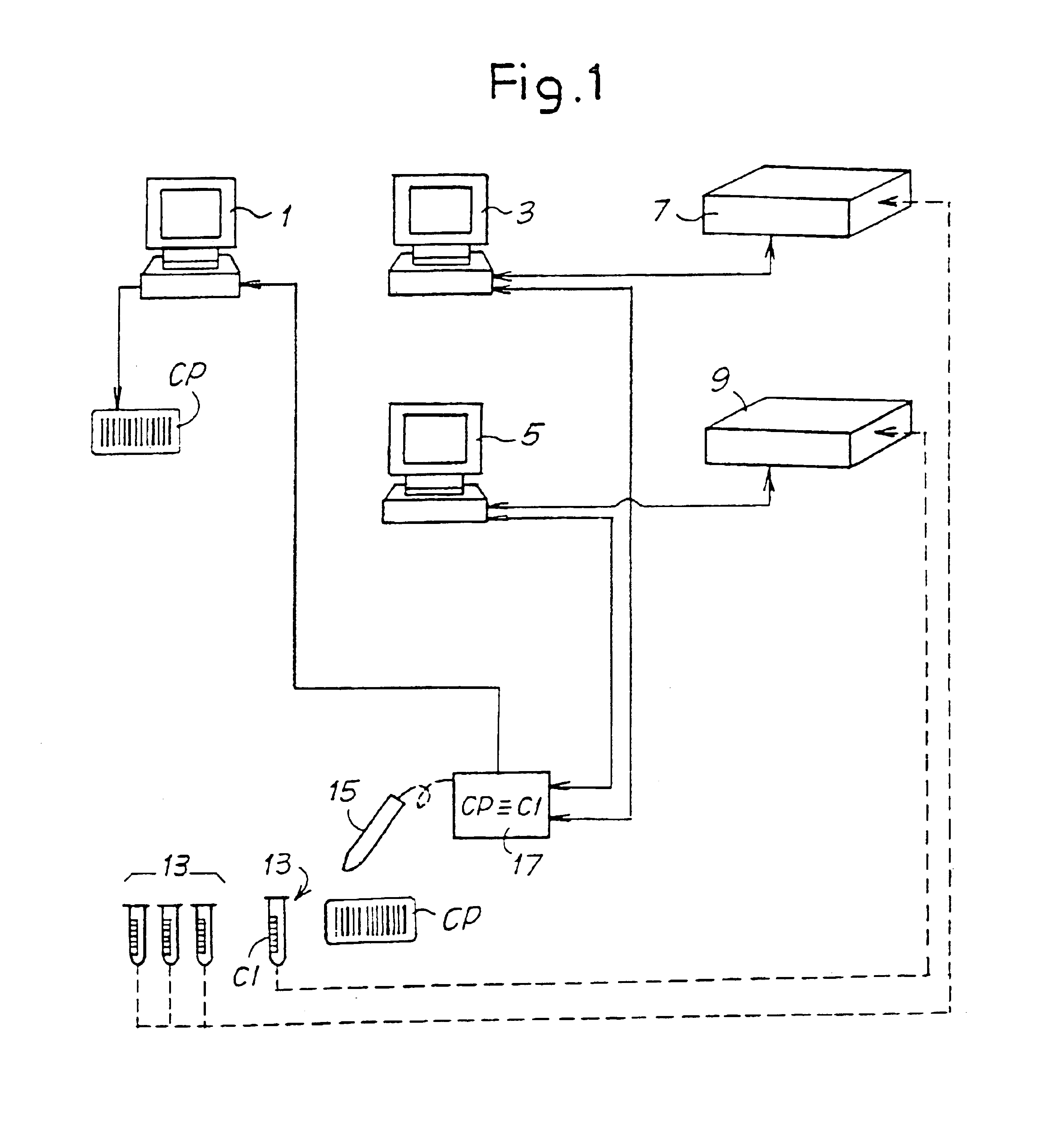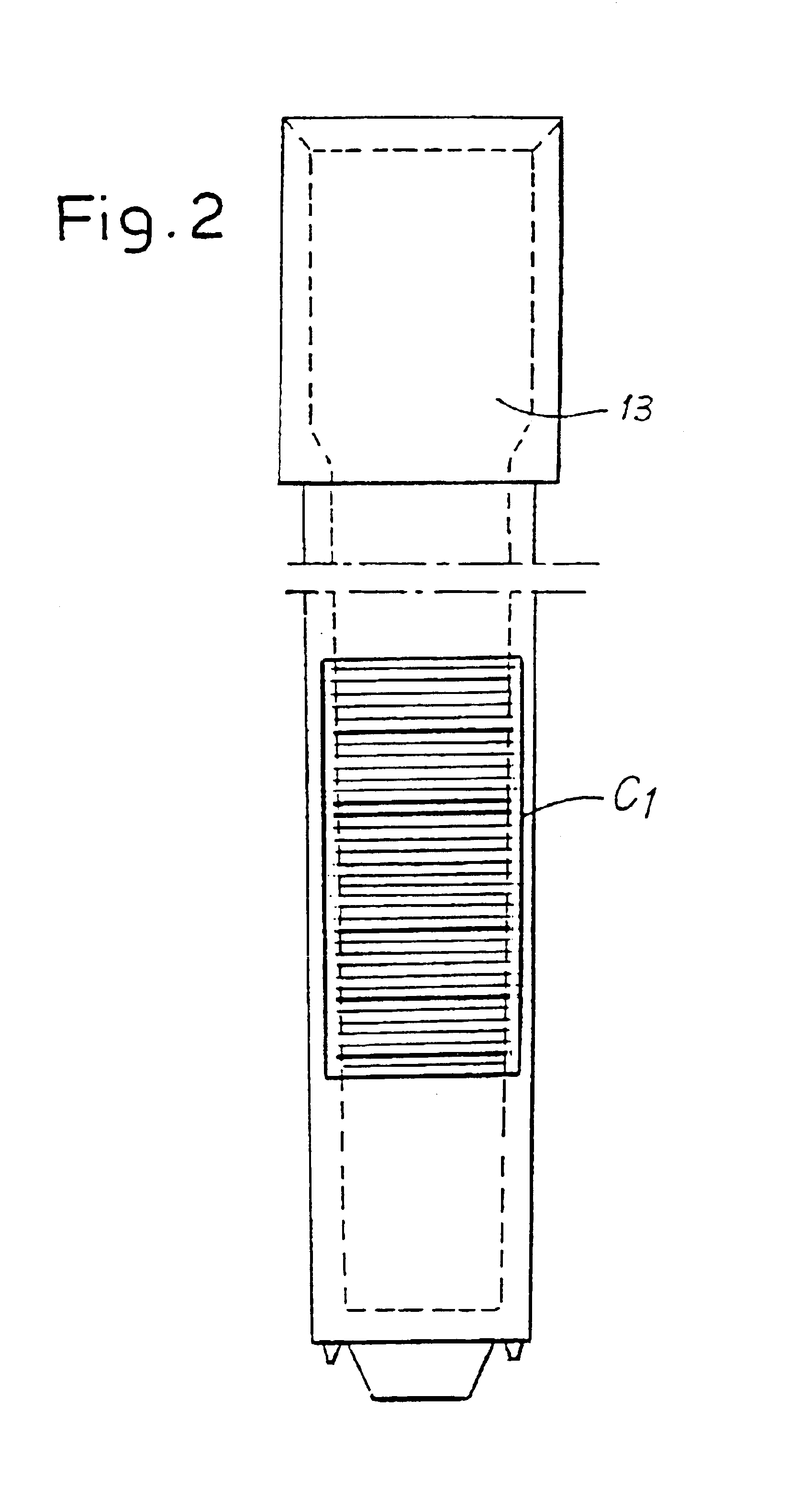Method and means for data management in a laboratory
a laboratory and data management technology, applied in the field of laboratory data management, can solve the problems of human error, reduced results, and increased risk of left over labels being erroneously applied to containers for a different patient, so as to improve the quality of the system and minimize management errors
- Summary
- Abstract
- Description
- Claims
- Application Information
AI Technical Summary
Benefits of technology
Problems solved by technology
Method used
Image
Examples
Embodiment Construction
FIG. 1 shows schematically a network of units forming a data processing system in which the method according to the present invention can be implemented. The number 1 indicates a central electronic computer (host computer). The central computer 1 is programmed to acquire the patient data and to generate for each patient a patient code CP, which for example is printed in the form of a bar code on a paper medium.
The numbers 3 and 5 indicate two peripheral electronic computers for monitoring and operating corresponding analyzers 7 and 9. The patient whose data have been acquired by the central computer 1 and for whom a patient code CP has been output passes into an area for taking biological specimens, showing his patient code CP, and here an operator takes the specimen and places, for example, the blood (or other biological specimen) in one or more containers 13. Each container 13 is provided with an identification code CI, which is unique and absolute, in other words different for ea...
PUM
 Login to view more
Login to view more Abstract
Description
Claims
Application Information
 Login to view more
Login to view more - R&D Engineer
- R&D Manager
- IP Professional
- Industry Leading Data Capabilities
- Powerful AI technology
- Patent DNA Extraction
Browse by: Latest US Patents, China's latest patents, Technical Efficacy Thesaurus, Application Domain, Technology Topic.
© 2024 PatSnap. All rights reserved.Legal|Privacy policy|Modern Slavery Act Transparency Statement|Sitemap



